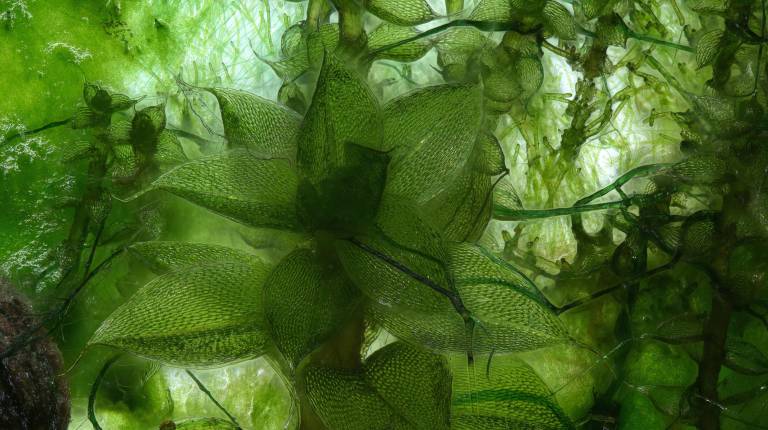
Research
Subject
Design with Bryophytes: biotic exchanges and environmental benefits of moss growth on urban bioreceptive surfaces.
First and second supervisors
- Prof Marcos Cruz
Dr Brenda Parker
Abstract
Cities around the world are in urgent need of extensive, autonomous and fast-growing green areas to mitigate the effects of climate change. At the same time, as urban populations are growing, designing environments that inspire a sense of wonder and connectedness with natural systems is becoming as important as offsetting the ever-increasing production of pollutants.
Bryophyte communities play an essential role in supporting global environmental processes. They generate vital ecosystem services for wild and urban areas alike. In a similar way to forests – just at a very small scale – moss covers contribute to maintaining life-conducive conditions by providing shelter and food for a highly diverse set of organisms across all kingdoms of life.
The main aim of this research is to understand and measure the real benefits of moss in terms of carbon sequestration and capturing of airborne particulate matter in urban environments, while also understanding the role of humic substrates and specific microbiota to establish new moss communities. The generated quantitative data will contribute to a broader ongoing research in Bio-ID on bioreceptive design, which is aimed at finding a systematic and viable approach to increasing cryptogamic surface cover on walls in cities.
The research focuses on the understanding of complex and highly dynamic interactions between environmental, biological and chemical factors. It creates a new framework for monitoring, analysing and reproducing the conditions needed for natural biocolonisation and the development of high resolution bioreceptive conditions. On the other hand, recording and disseminating the dynamic interactions occurring between mosses, their substrates, associated organisms and local environmental parameters can augment human perception of small-scale natural systems, enhancing the value humans assign to micro-scale landscapes.
Biography
Alexandra Lăcătușu started studying architecture at the Politechnic University of Timisoara and completed her Bachelor Degree at the Kent School of Architecture. She has since worked at Andreescu and Gaivoronschi Associated Architects, and has taken part in the Climate KIC’s Pioneers into Practice programme. She then moved on to do her Master degree in Architectural Design at the Oxford School of Architecture where she specialised in Sustainable Building Performance and Design and Digital Design.
Before starting her PhD research at the Bartlett School of Architecture and UCL Department of Biochemical Engineering, Alexandra worked as a Research Assistant in Bio-ID. Her work was exhibited at the 2018 RIBA President Medals and the 2021 Venice Biennale. She is currently a Teaching Assistant in the Bio-Integrated Design MArch/MSc course at the Bartlett School of Architecture and an Associate Lecturer at the Oxford School of Architecture.
Publications
- Fletcher, M 2020, Visual Communication For Architects And Designers, Taylor & Francis Group, Milton.
- Lăcătușu, A 2019, ‘E-topia: Arhitectură Bio-logică’, Igloo, no. 191, pp. 160-163.
- Lăcătușu, A 2019, ‘E-topia: Next Nature Architecture’ [online], Eleven Magazine.
- Lăcătușu, A 2018, ‘E-topia: Bio-logic fiction, OSA Magazine, no. 10, pp. 136-140.
- Lăcătușu, A 2018, ‘World of Bios’, OSA Magazine, no. 9.
- Gaivoronschi, V, Andreescu, I, Lăcătușu, A 2015. ‘Urban regeneration and its surprise due to the discovery of VIIIth century architectural artefacts’, In RE-ConD’15 International Conference: Re-Evaluating Contemporary Designs in Historical Context, Istanbul.
Funding
UCL Engineering and Physical Sciences Research Council (EPSRC) Doctoral Training Partnership (DTP)
Image: © Alexandra Lăcătușu
 Close
Close

